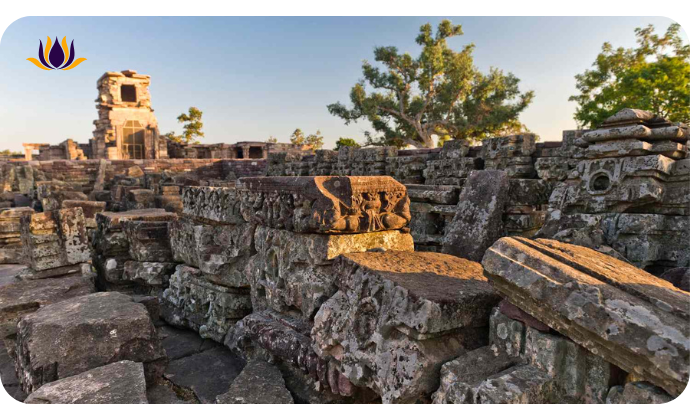The Maurya Empire was one of India’s most significant ancient empires, with a vibrant history that spanned several centuries. It was founded in 321 BCE by Chandragupta Maurya, who went on to create one of the largest empires in the world at that time.
Early History:
The early history of the Maurya Empire is shrouded in mystery, with very little known about its origins. However, it is believed that Chandragupta Maurya, a disciple of the famous philosopher Chanakya, founded the Maurya Empire.
The Mauryan Empire:
Chandragupta Maurya was a powerful and ambitious ruler who expanded the Mauryan Empire through military campaigns. He was succeeded by his son Bindusara, who continued to expand the empire further.
The Mauryan Empire reached its zenith under the rule of Emperor Ashoka, who ascended to the throne in 268 BCE. Ashoka is known for his efforts to promote Buddhism and his edicts inscribed on rocks and pillars throughout the empire. One of his famous edicts states, “All men are my children. As for my children, I desire that they may be provided with all the welfare and happiness of this world and of the next, so do I also desire for all men.”
Languages Spoken in Maurya Empire
The Maurya Empire was home to various languages, including Sanskrit, Prakrit, and Pali. Sanskrit was the language of the elite, while the common people spoke Prakrit and Pali more widely. These languages helped create a rich and diverse cultural landscape that continues to influence Indian society to this day.
To sum up, the Maurya Empire was a significant force in ancient India, and its legacy continues to be felt in modern India’s cultural, social, and political landscape. Its achievements in art, architecture, and governance are a testament to the ingenuity and creativity of the people who lived in the empire.
The Decline of the Maurya Empire:
After the decline of the Maurya Empire, the region was ruled by a succession of other empires, including the Shunga dynasty and the Gupta Empire. However, the legacy of the Maurya Empire continued to influence Indian culture and society for many centuries.
Legacy of the Maurya Empire:
The Maurya Empire was a center of art, culture, and learning. Its legacy continues to be felt in modern India. The empire made significant contributions to the fields of literature, art, and architecture. Its rulers were known for their patronage of the arts and their support for education and scholarship.
Some of the most notable cultural achievements of the Maurya Empire include the construction of the Ashoka Pillars, which were inscribed with edicts promoting peace, non-violence, and religious tolerance. The empire also made significant contributions to mathematics, astronomy, and medicine.
Overall, the Maurya Empire was a significant force in ancient India, and its legacy continues to be felt in modern India’s cultural, social, and political landscape.
Popular Culture References:
The Maurya Empire has been depicted in numerous movies, television shows, and books, including the famous Indian series “Chandragupta Maurya” and the Bollywood film “Ashoka the Great.” The Mauryan Emperor Ashoka has also been the subject of numerous books and documentaries, highlighting his role in spreading Buddhism and promoting peace and non-violence.



Leave a Reply